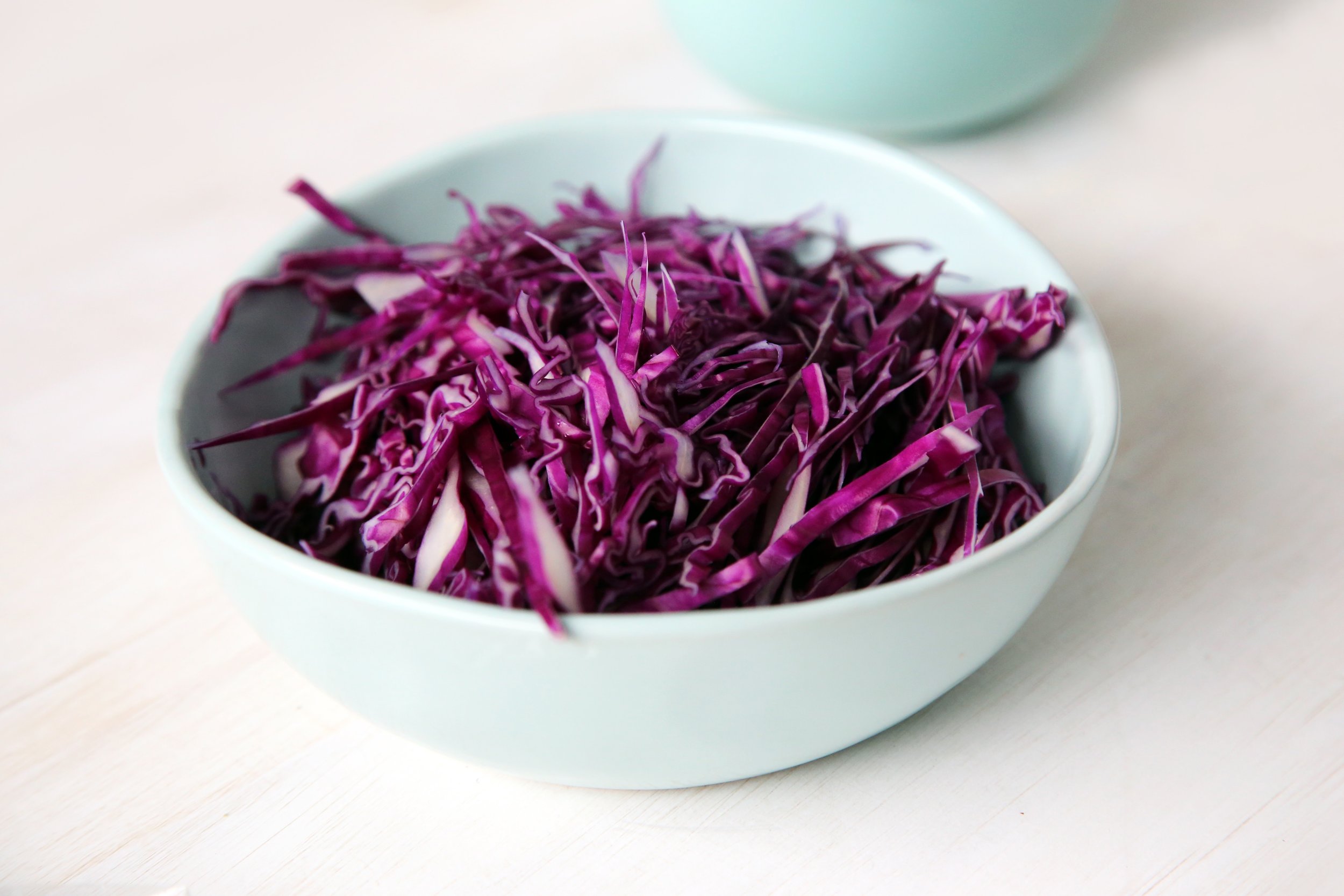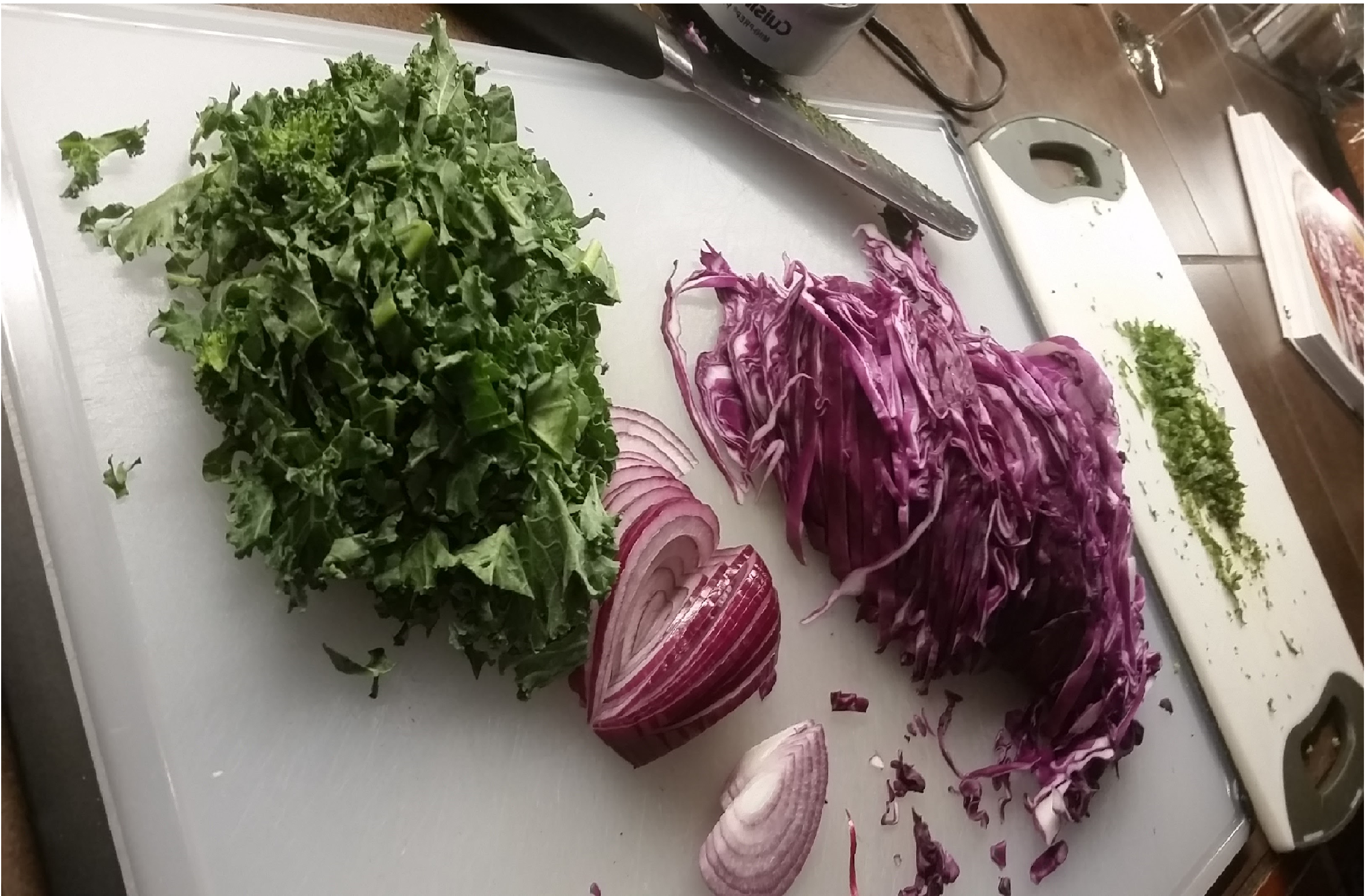Wilted Cabbage with Seasonal Herbs
/By now you know that I am a huge fan of cruciferous vegetables. For some people, however, the thought of eating cruciferous vegetables elicits a horrified response. And with good cause because for some people, gene variants truly do accentuate their earthy flavor, to the point that they are unpalatable. In these cases, we get creative in the kitchen, using oils, adding heat through spices and even using fruit in a recipe to bring a different flavor direction and taste perception to the dish. It works!
But for the remainder of us, cruciferous vegetables should be a constant in our kitchens. They are a source of the powerhouse bioactive sulforaphane which I talk about in depth here. I am always looking for quick and unique ways to translate crucifers to the plate, and I always have a cabbage in my refrigerator too. It's my trusty friend, a go to ingredient and its inexpensive too. One day I was leafing through yet another of Deborah Madison's great recipe books and came across a beautiful recipe for wilted cabbage. It was so easy and so flavorful that I immediately adopted it. And of course, with any great recipe you start to add your own spin. With food-gene connections swirling in my head, I played around with the base recipe. I nipped and tucked a tad and what emerged was a wilted cabbage recipe that talks to both your taste buds and of course, your genes!
All you need are cabbage, a red onion, an additional crucifer of your choice and then some fresh herbs, whichever are in season. OK, in the Fall and Winter you may have to resort to packaged herbs, but the outcome is still the same.
Now a little bit of science comes with this recipe. When you apply heat to cruciferous vegetables, you can actually reduce or even terminate the production of the food-gene connecting bioactive sulforaphane which is created when we chop or chew crucifers . The higher the heat (roasting, frying) the less likely you are to produce this important bioactive which is essential to our oxidative stress and inflammation management systems. What is a person to do? You either reduce the heat and cooking time, or you sneak back in fresh crucifers at the end of the recipe. This way you can have your cooked crucifers and get a food gene connection too!
Here I use slivered kale at the end of the recipe as my food-gene insurance policy!
This recipe is a perfect balance of quickly cooking a crucifer (cabbage) using a lower heat method. Then we as add back in a handful of fresh uncooked herbs and delicate crucifers right at the end, providing a bioactive insurance policy! So here you have fast, simple, delicious food with a food-gene connection. And if you want to transform this from a side to a main, add some feta or goat cheese, or maybe some grilled or sauteed tofu or tempeh. Strips of marinated chicken or beef work too. Here's the recipe.
Grab These
3 tablespoons olive oil
1 medium (or 2 small) red onions, cut crosswise into thin rings
2 small garlic cloves, minced
5 1/2 cups packed very finely sliced red cabbage (1 1/4 lbs.)
About 1 1/2 tsp. sea salt
1 lemon, zested and juiced (more if lemon is not juicy)
3/4 cup mixed fresh herbs: dill, parsley, mint, basil, thyme
Pepper
1 cup or more fresh watercress or arugula (pre-packaged is fine)
Now Do This
In a large frying pan or wok (I prefer a wok) heat the oil gently over medium heat.
Add the onions, using tongs to turn and coat with oil. Cook for about 2 minutes to soften them.
Then add the garlic, cabbage and salt tossing them together with the onions. Cook, using the tongs to move the ingredients constantly. You want the cabbage to be barely wilted or still toothy, but not raw.
Remove the pan from heat. Pour the lemon juice and zest over the cabbage mixture and toss to combine. At this point, taste and add more lemon juice as needed.
Now toss in the herbs and your extra handful of crucifers. Add some good grinds of pepper and you are ready to serve.
I love this recipe served warm from the pan, or as a cool leftover the next day. You can also add a dollop of yogurt dill dressing, or even a yogurt dressing scented with harissa or cumin. A sprinkle of sesame seeds adds another dollop of nutrients if you want to power this up another level! And yes, if you can't live without some heat, a few grinds of Aleppo Pepper does the trick.




